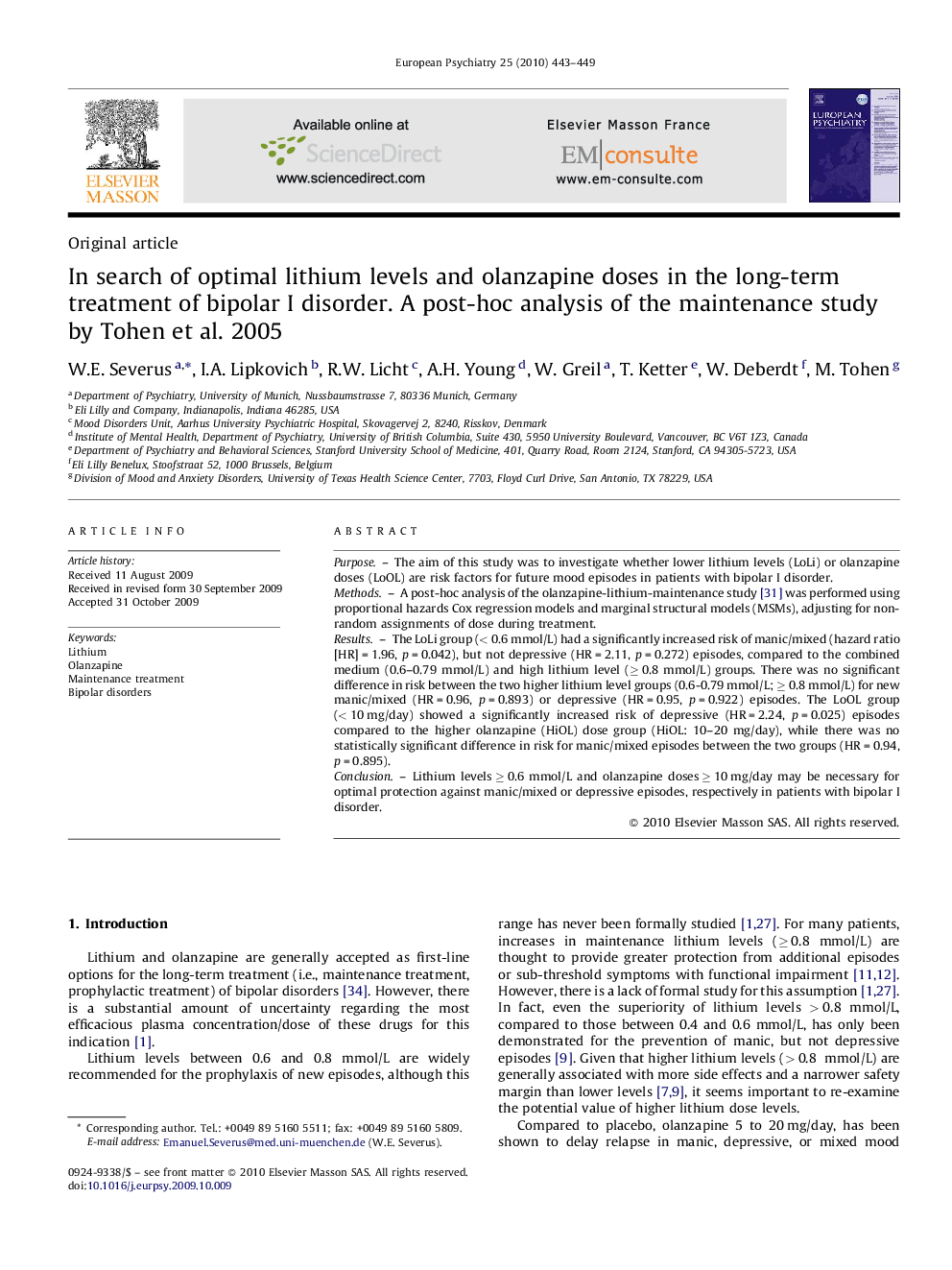| Article ID | Journal | Published Year | Pages | File Type |
|---|---|---|---|---|
| 4184527 | European Psychiatry | 2010 | 7 Pages |
PurposeThe aim of this study was to investigate whether lower lithium levels (LoLi) or olanzapine doses (LoOL) are risk factors for future mood episodes in patients with bipolar I disorder.MethodsA post-hoc analysis of the olanzapine-lithium-maintenance study [31] was performed using proportional hazards Cox regression models and marginal structural models (MSMs), adjusting for non-random assignments of dose during treatment.ResultsThe LoLi group (< 0.6 mmol/L) had a significantly increased risk of manic/mixed (hazard ratio [HR] = 1.96, p = 0.042), but not depressive (HR = 2.11, p = 0.272) episodes, compared to the combined medium (0.6–0.79 mmol/L) and high lithium level (≥ 0.8 mmol/L) groups. There was no significant difference in risk between the two higher lithium level groups (0.6-0.79 mmol/L; ≥ 0.8 mmol/L) for new manic/mixed (HR = 0.96, p = 0.893) or depressive (HR = 0.95, p = 0.922) episodes. The LoOL group (< 10 mg/day) showed a significantly increased risk of depressive (HR = 2.24, p = 0.025) episodes compared to the higher olanzapine (HiOL) dose group (HiOL: 10–20 mg/day), while there was no statistically significant difference in risk for manic/mixed episodes between the two groups (HR = 0.94, p = 0.895).ConclusionLithium levels ≥ 0.6 mmol/L and olanzapine doses ≥ 10 mg/day may be necessary for optimal protection against manic/mixed or depressive episodes, respectively in patients with bipolar I disorder.
